We pay relatively little attention to gutters – they are an accessory whose function is to just drain water from the roof. Contrary to what you may think, not every gutter is the same – differences exist in materials, shapes and also functions. However, when planning a roof replacement or more advanced exterior remodeling, it is worth distinguishing types of gutters, as this will make it much easier for you to choose the right solutions.
Table of Contents
Types Of Gutters – Most Popular Materials
Many different materials are used in the construction industry, but today, gutters are mostly made of 4 materials: composites, copper, aluminum and stainless steel. They are largely interchangeable, although clear differences can be seen between them.
Composite Gutters – Pros And Cons
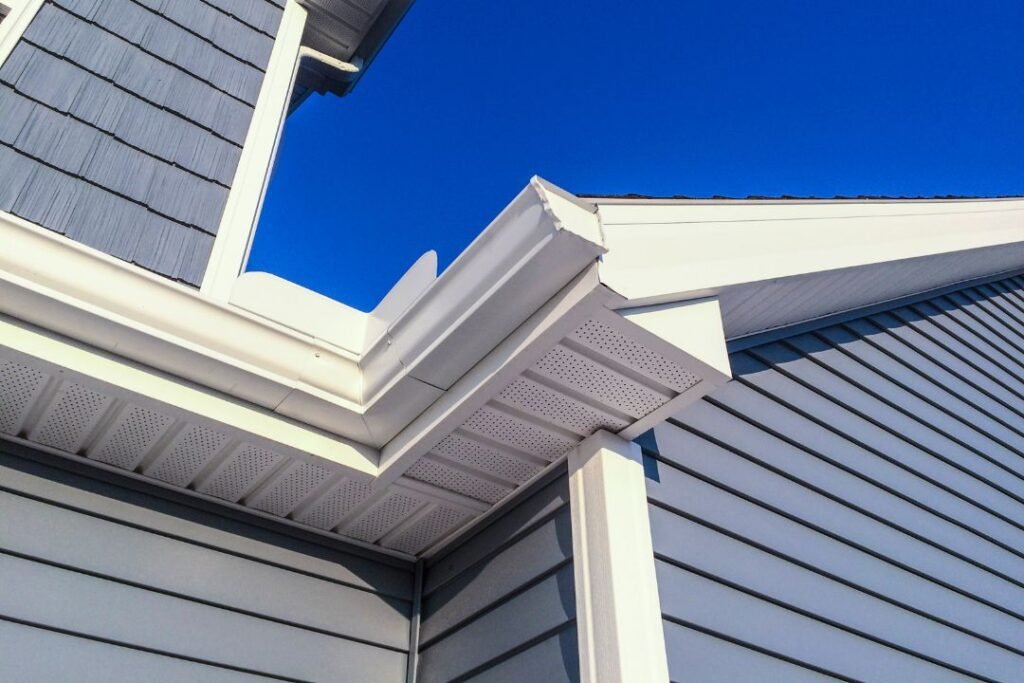
Composite gutters are usually made of mixtures of many different varieties of plastic (mainly PVC) and fiberglass. Their advantages are undeniable – installation is simple, and there is no risk of corrosion. Composite gutters are also very inexpensive. On the other hand, unlike metal, PVC can distort or crack at extremely high and extremely low temperatures. Compared to other types of gutters, composite ones are the cheapest and are convincing in their versatility. In climates typical of Chicagoland as well as all of Illinois, you don’t have to worry about PVC’s sensitivity to temperatures.
Composite gutters are perfect where you want fairly good quality at a very low price.
Copper Gutters – Pros And Cons
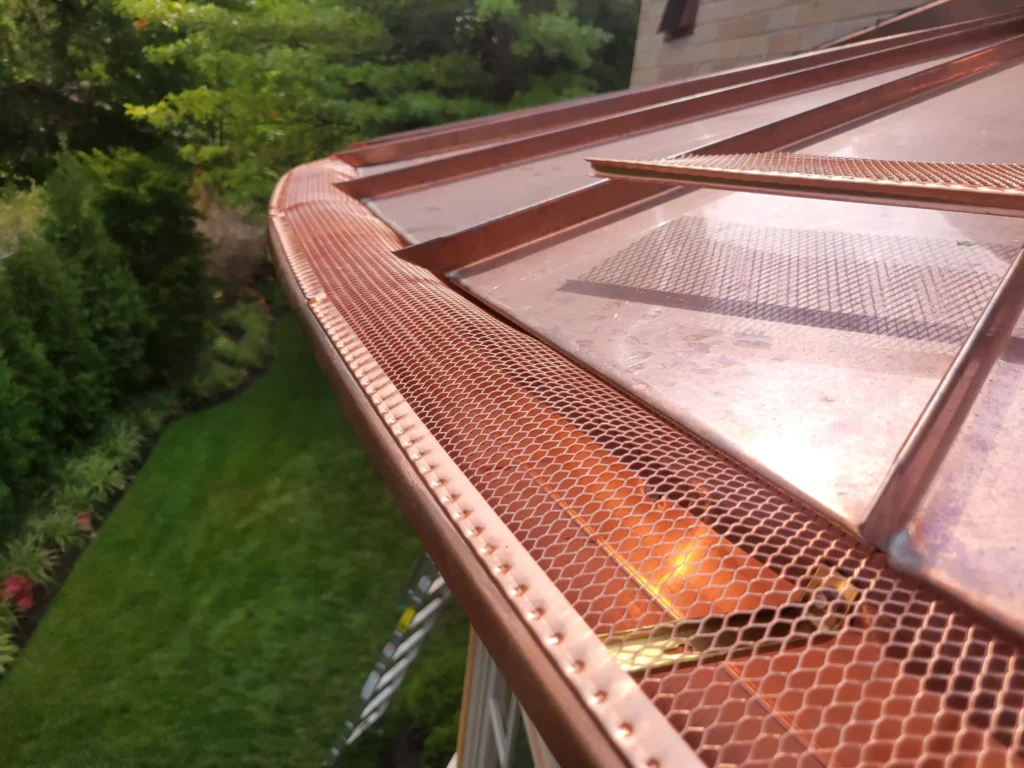
Copper gutters are a bit of an extravagant choice – homeowners opt for them primarily because of other looks and exclusivity. It must be said that in addition to its above-average beauty, copper is also a long-lasting material, because even after many years, it shows no signs of wear. There is also no corrosion, although you have to reckon with a change in color from bronze to greenish.
Copper gutters, however, have disadvantages – first and foremost, they are expensive, both at the purchase and installation stages, as their processing requires specialized techniques and equipment to properly bend the sheet metal. Also consider that not every gutter contractor in Chicago North Shore will undertake their installation – mistakes made can be very costly to eliminate, as copper expands and contracts with temperature changes, which can result in leaks and bends.
We suggest installing copper gutters for people who are particularly concerned about personalizing every detail in their home. If you are decorating a residence, this may be the product for you.
Aluminum Gutters – Pros And Cons
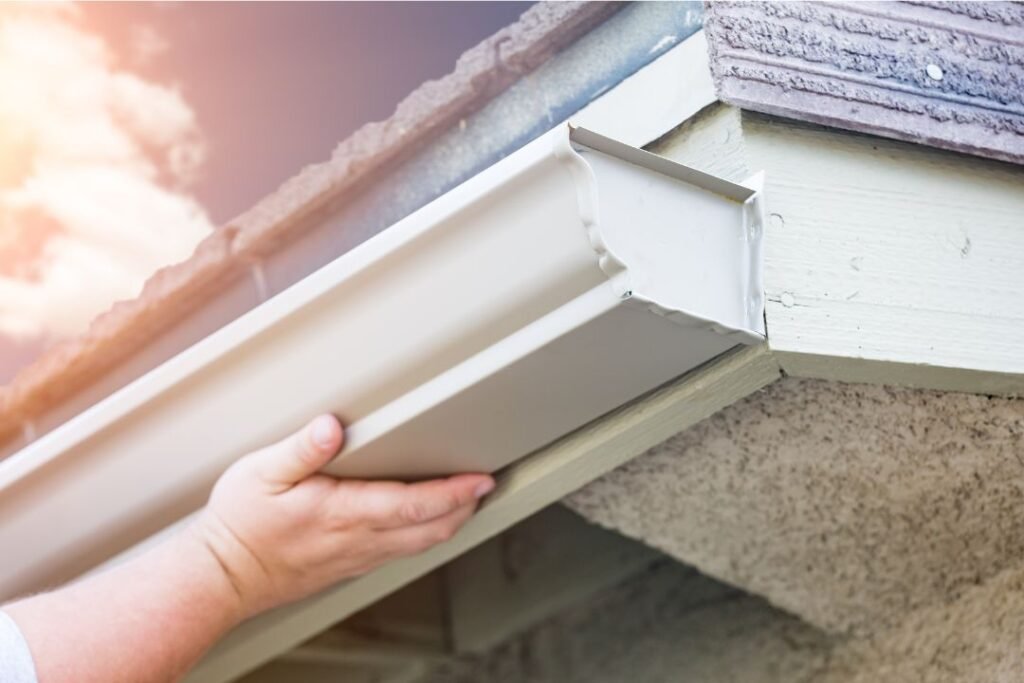
Of all the types of gutters, aluminum ones are probably the most common choice. They are lightweight, corrosion-resistant, available in a wide range of colors, and easy to install. Sounds perfect, right? Yes, although you have to reckon with their vulnerability to impacts – aluminum is quite delicate and during hailstorms or rainstorms, flying objects can damage them very easily.
Aluminum gutters are more expensive than plastic ones, but clearly cheaper than those made of copper. Also, their installation does not involve a large expense. This is a very good solution for those who are looking for ready-made and proven solutions.
Stainless Steel Gutters – Pros And Cons
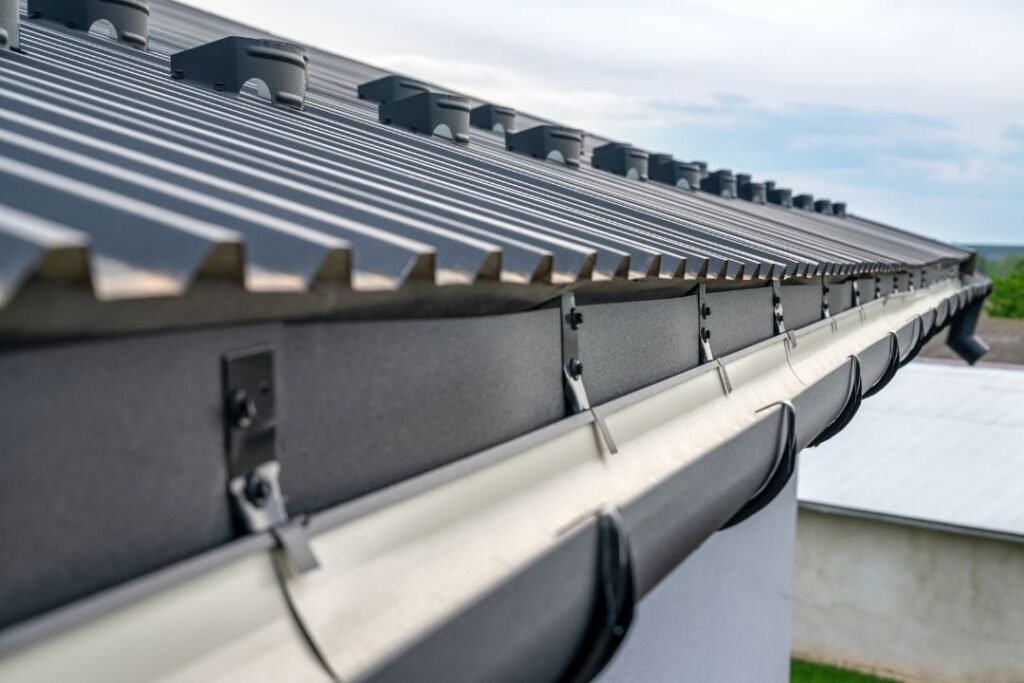
Of all types of gutters, stainless steel ones are probably the most durable, though not necessarily the most long-lasting. Stainless steel resists corrosion, does not warp, and is relatively inexpensive to install. Unfortunately, there are also disadvantages – compared to the other 3 types of gutters, these are the heaviest, forcing the preparation of more solid fixings. They are also more expensive than composite and aluminum gutters, although much cheaper than copper.
Stainless steel will be an excellent material for gutters that are exposed to mechanical stresses. Being hit by a branch or a ball of ice during a hailstorm is unlikely to cause visual damage, and the resistance to corrosion and other factors means that these gutters will also perform well in harsher climates as well as in the immediate vicinity of a lake.
Types Of Gutters – Different Shapes
There are also differences in the shape of the gutters. Some of them, are dedicated to typical commercial applications, while others are designed primarily for luxury homes. The shape of the gutter also translates into its capacity, so it should be matched to the area of the roof and the statistical amount of rainfall. There are also differences in attachment systems.
K Style Gutter
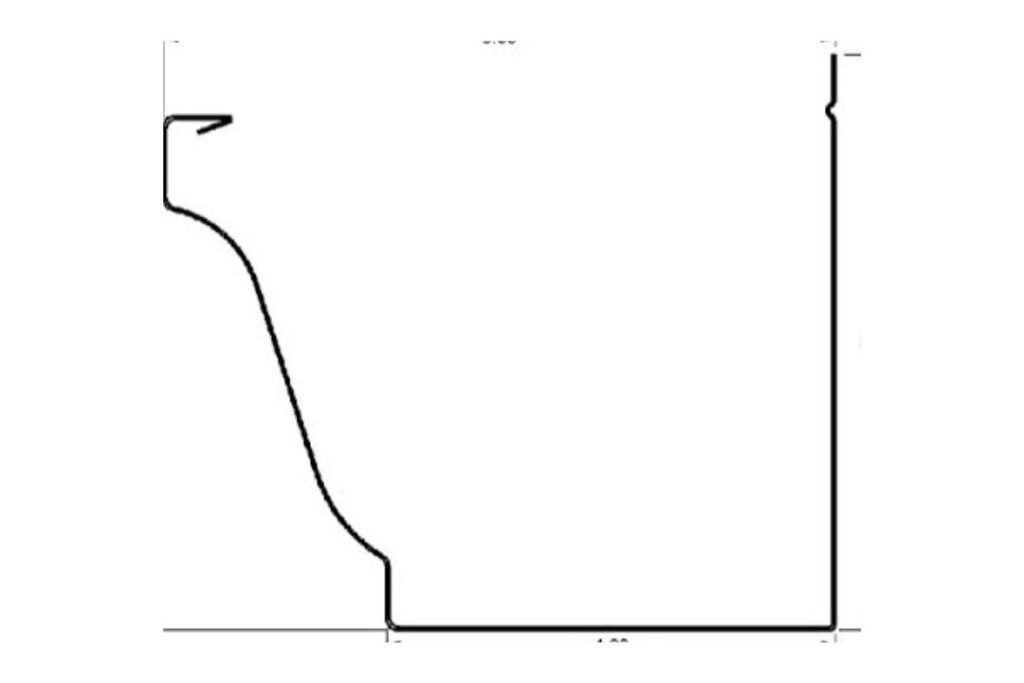
One of the most decorative types of gutters is K-style. Their unusual name derives from their shape, which to some resembles just the letter “K.” Nowadays, they are especially popular in the United States and Canada, due in part to their good drainage performance, durability and, interestingly, most of their resistance to denting. In addition, most k-style gutters have a flat back wall, which allows them to be nailed directly to the fascia. This affects the aesthetics of the roof and allows for much stronger joints.
On the other hand, K style gutters are more difficult to clean than other types of gutters, and in addition, they are practically not made of copper. PVC, stainless steel and aluminum products are definitely more common.
Box Gutter
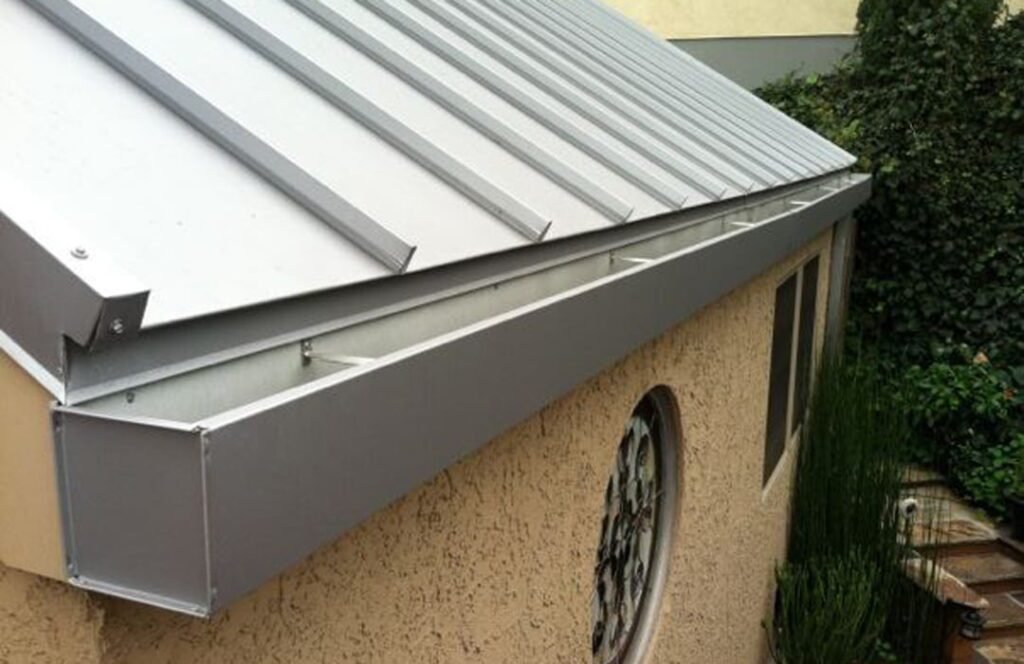
Among the many types of gutters, box gutters stand out for their simplicity and efficiency. They are rectangular pipes that work very well in transporting large volumes of water. Their unsophisticated appearance makes them a frequent choice in commercial construction, as they are less expensive to purchase and maintain.
Box gutters should have a relatively steep slope, ranging from 1:200 to 1:400. They can be used in roof valleys, at parapet walls as well as in the most traditional way.
Half Round Gutter
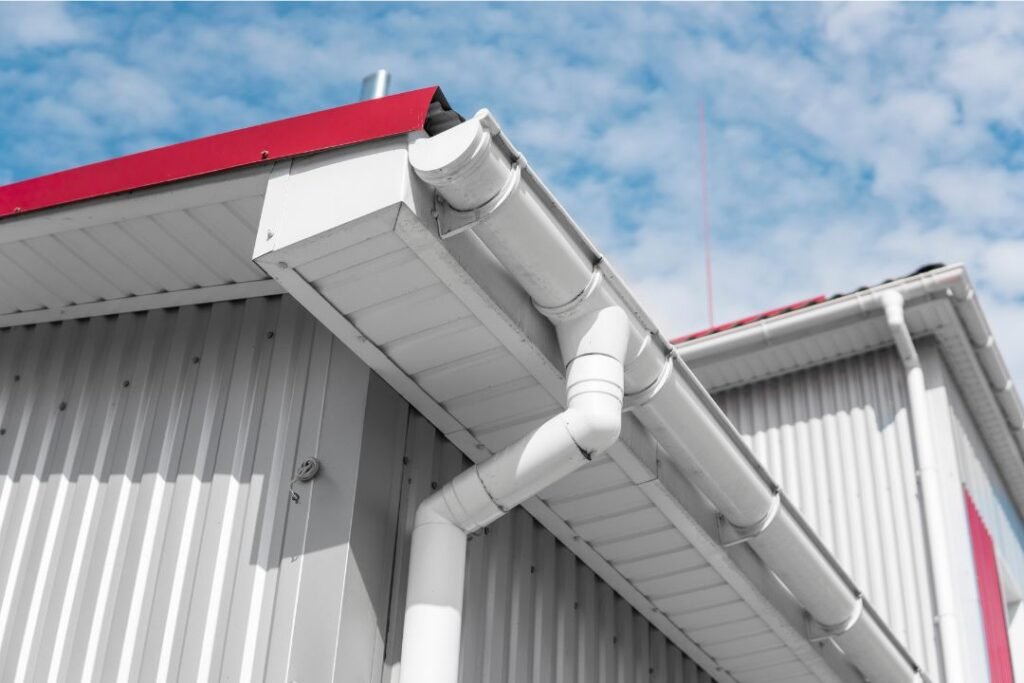
Half-round gutters are popular primarily in Europe, but you’ll also find them in the United States. Their essential advantages include ease of cleaning, efficient drainage, elegant appearance and ease of installation. They are a minimalist, versatile and widely available product.
Half round gutters are available in many color variants and are made of many materials. This is the style we most often make our custom copper gutters in Glenview, Winnetka and other Chicagoland cities. Aluminum, composites and stainless steel are also popular. You are limited only by your imagination!
Seamless Gutter
Unlike other types of gutters, seamless gutters are manufactured on site, just before installation. As the name implies, they are distinguished by the absence of seams, which are the most common place for leaks to occur. Seamless gutters can come in many different shapes, but they are slightly more common as half-round, not k-style or box. Unfortunately, greater seamlessness usually comes with a higher installation price, but your home will also benefit from the aesthetics.
Fascia Gutter
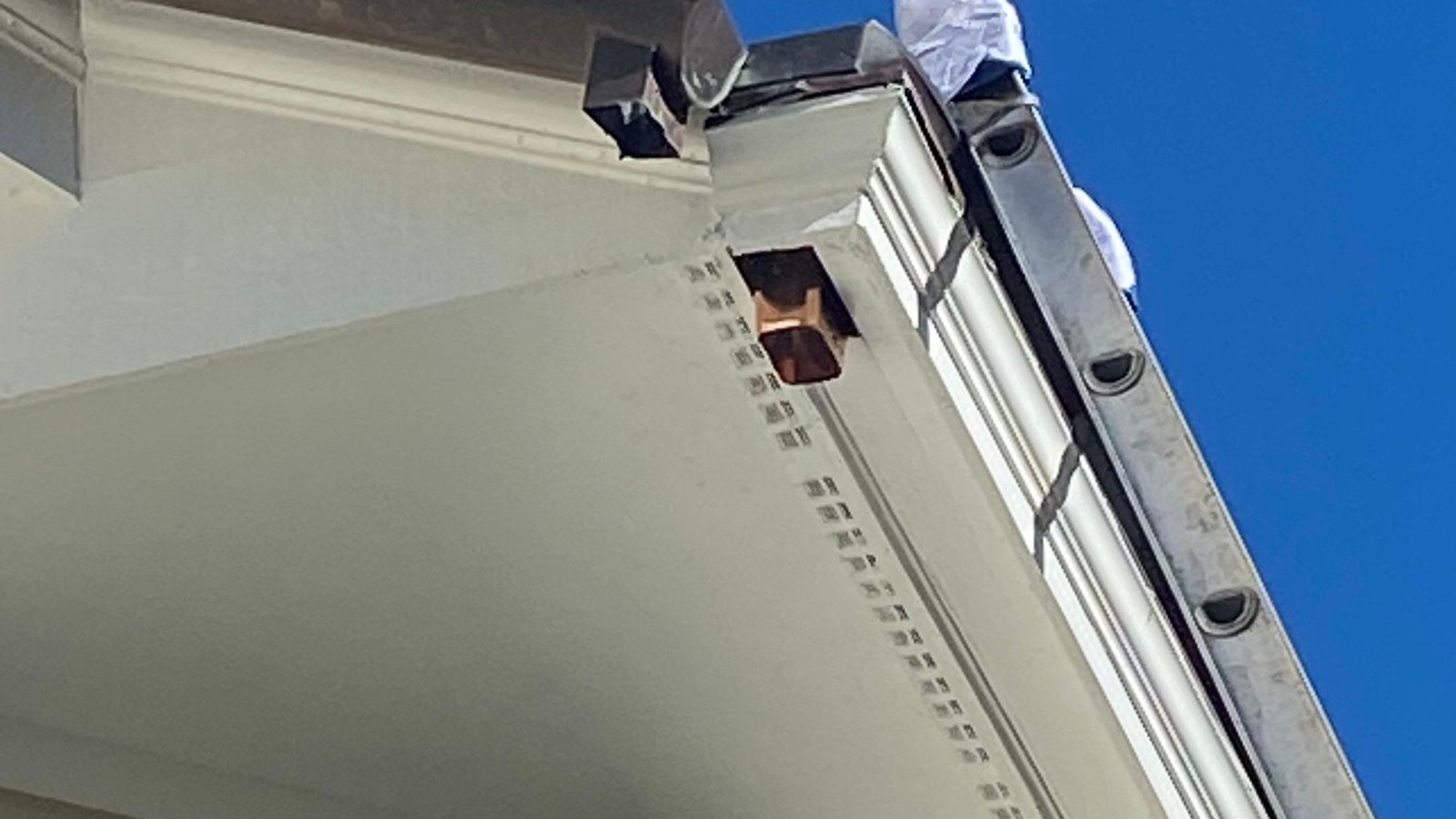
Fascia gutters are distinguished by the way they are attached – they are placed closer to the contour of the building, just on the fascia board. This is a very good solution, as it improves the aesthetics of the roof, allows the installation of larger (for example, box) gutters and reduces the risk of mechanical damage. They are most often used for vinyl siding and asphalt shingle roofs, but this is not a rule – you can use fascia gutters for virtually any project.
Integral Gutter

Unlike other types of gutters, integral ones are drastically losing popularity. Although they stand out for their above-average capacity, they can be dangerous. With their operation, leaks into the attic can occur, and drains can clog. This makes regular inspections essential. In theory, using gutter guards will protect you from clogging, but the risk of leaks still remains.
Valley Gutter

Valley gutter is distinguished from different types of gutters by its location – rather, it is a kind of roof flashing. Their use is necessary to avoid the occurrence of leaks in roof kinks, which can happen especially in older homes. Valley gutters are most often made of metal – copper, aluminum as well as stainless steel are popular.
Victorian Ogee Gutter
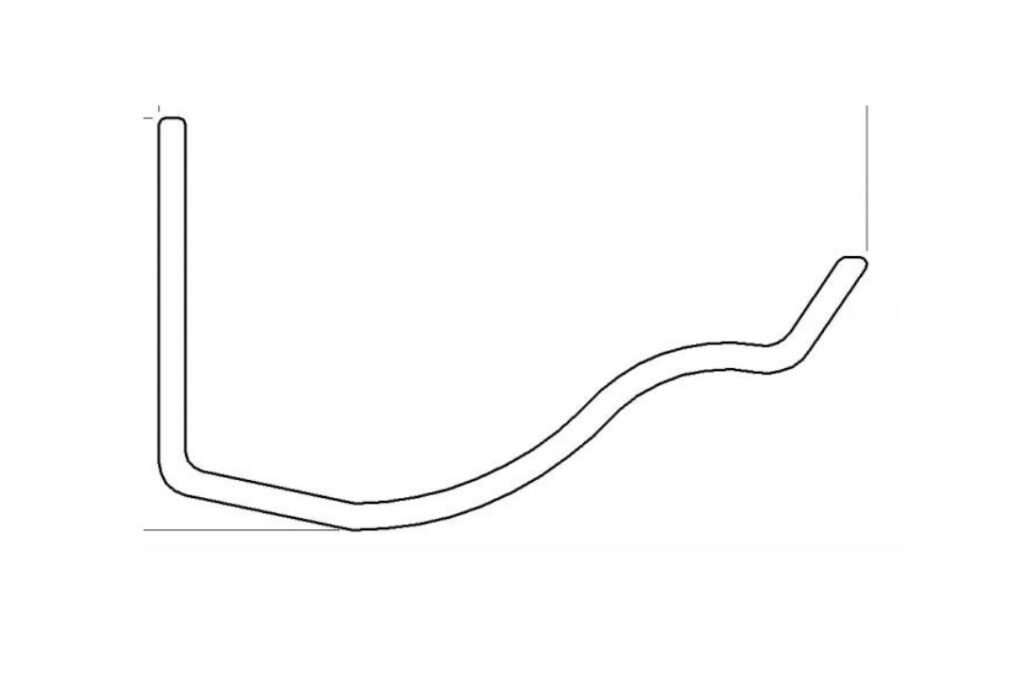
Victorian ogee gutters are an old and increasingly unpopular solution, used primarily in classic homes. While they are stunning in design, they also have quite a few drawbacks. First of all, they are very open at their top, which makes it easy for dirt to get inside. In addition, their design greatly increases the risk of bending – compared to half-round ones, victorian ogee gutters are much less rigid.
What Is The Best Type Of Gutters?
Well, the choice is not easy, as many guttering solutions are chosen for aesthetics. However, if we were to go by price, durability and longevity, we can point to a few suggestions.
For those on a tight budget, we suggest aluminum half-round or box gutters. They are durable, inexpensive to buy and install, and usually last up to 20-30 years of standard use. Admittedly, they do not impress with their unique design, but they correctly blend in with most roofs and perform their function. As with anything else, you should install gutter guards right away.
If you have a little more budget, you can consider choosing k-style seamless gutters made of stainless steel. The more interesting shape, sturdier material and greater resistance to leaks will make their use comfortable and trouble-free.
If your priority is quality and aesthetics, for which you can pay more, it is potentially a good idea to buy copper gutters in basically any shape. You should also consider installing them on the fascia – this will reduce the risk of breakage when overflowing with water. Of course, it is also worth equipping yourself with gutters guards, which can also be made of copper.

